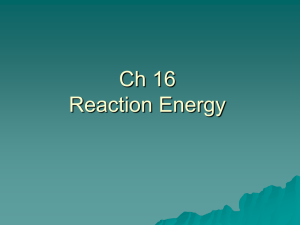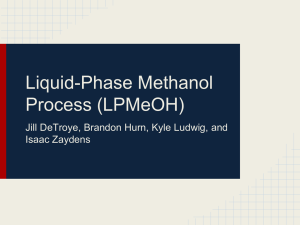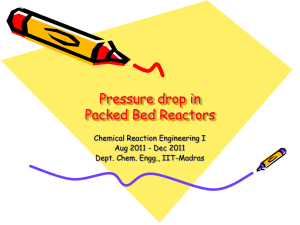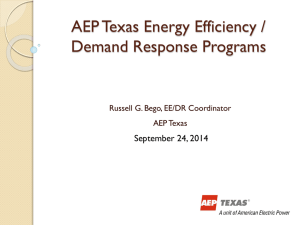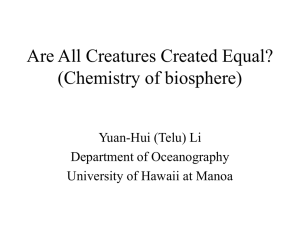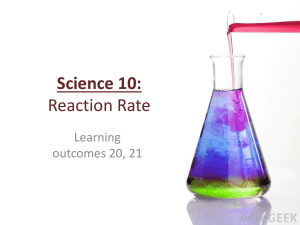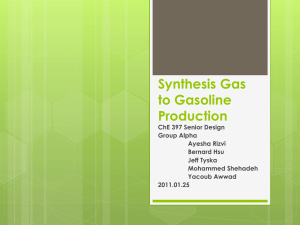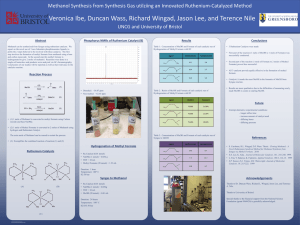Methanol
advertisement
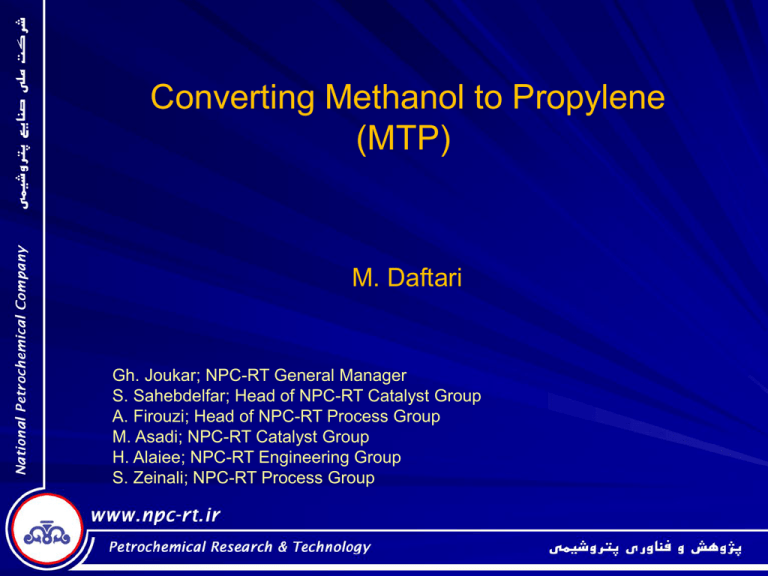
Converting Methanol to Propylene (MTP) M. Daftari Gh. Joukar; NPC-RT General Manager S. Sahebdelfar; Head of NPC-RT Catalyst Group A. Firouzi; Head of NPC-RT Process Group M. Asadi; NPC-RT Catalyst Group H. Alaiee; NPC-RT Engineering Group S. Zeinali; NPC-RT Process Group Outline • Natural Gas, Methanol and Propylene Chain • Joint MTP® Technology • Process • Catalyst • NPCRT’s new PVM® Technology • Economy • Methanol to Propylene • Gas to Propylene • Process Integrations Natural Gas • Huge resources of NG in Iran (world’s second resources) • Constant developing markets in: • Direct usage as less carbon-intensive fuel (distribution networks) • Power generation (power plants) • Transport to international markets (pipelines, LNG shipping) • Added value chemicals production (petrochemical complexes) Methanol, domestic supply & demand • Several domestic plants in operation • • • • Shiraz Petrochemical Complex (200,000 T/A) Khark Petrochemical Complex (660,000 T/A) Fanavaran Petrochemical Complex (1,000,000 T/A) Zagros Petrochemical Complex (2×1,650,000 T/A) • Ongoing domestic plants • • • • • • • • • • Khark Petrochemical Complex (1,300,000 T/A) Kaveh Petrochemical Complex (2,100,000 T/A) Marjan Petrochemical Complex (1,650,000 T/A) Bushehr Petrochemical Complex (1,650,000 T/A) Veniran Petrochemical Complex (1,650,000 T/A) Petrochem Petrochemical Complex (1,650,000 T/A) Kimia Pars Khavarmianeh Petrochemical Complex (1,650,000 T/A) Farsa Shimi Petrochemical Complex (1,650,000 T/A) Dipolymer Arian Petrochemical Complex (1,650,000 T/A … Supply is more than domestic demand, and major part of product are being exported Methanol, worldwide supply & demand Thousands of metric tones 125000 115000 105000 Capacity Production 95000 85000 75000 65000 55000 45000 35000 25000 2002 2004 2006 2008 2010 2012 2014 2016 2018 2020 Propylene, worldwide supply & demand Thousands of metric tones 130000 120000 110000 100000 90000 80000 Capacity Production 70000 60000 50000 2002 2004 2006 2008 2010 2012 2014 2016 2018 2020 Methanol to Olefin methanol Catalyst olefins paraffins aromatics What is Special about Zeolites? • Pores with molecular dimensions leads to shape selectivity • Narrow range of pores sizes in the solid because of crystalline materials giving better selectivity than non-crystalline Shapes Selectivity Conversion of MeOH to Olefin NG (CH4) MeOH (CH3OH) DME (CH3OCH3) Other C= series Water (H2O) C2= (C2H4) Acidic Behavior ɣ-Alumina Narrow pore Zeolites C3= (C3H6) • SAPO- 34 • SAPO- 18 • Chabazite Medium pore Zeolites • ZSM -5 Paraffins LPG, Gasoline • ZSM- 11 Wide pore Zeolites Mordenite ZSM-4 Faujasite (X and Y) Water (H2O) Converting MeOH to Propylene NG (CH4) Natural Gas CH4, Pure SynGas Processes MeOH (CH3OH) DME (CH3OCH3) Other C= series No Oxygenate C3= Methanol Di-methyl Ether Grade AA CH3OCH3 (40% Mole) CH3OH Water (100 Kg/Hr) H2O (40% Mole) Methanol C2= (C2H4) * By default, recycles back to reaction LPG (4 Kg/Hr) C3= (C3H6) Gasoline (8 Kg/Hr) Water CH3OH (20% Mole) CO, H2 (32 Kg/Hr) Paraffins LPG, Gasoline Water (H2O) (56 Kg/Hr) C2=* (~ 2 Kg/Hr) Joint MTP® Project with Lurgi Oel.Gas.Chemie • Started at 2003 • Joint development of a commercial scale of MTP® process • Research studies on pilot plant scales • Design, construction and startup of the first semi-commercial MTP Demo Plant in the world • Basic engineering of the first commercial MTP plant in the world MTP, Block Flow Diagram HP Steam DM Water HP Condensate Unit 1000 Steam System Unit 1100 Cold Water System Flare Unit 1200 Refr. System HC C3= MeOH, DME MeOH Unit 100 Reaction Unit 300 Gas Separation Unit 400 Compression Unit 500 Purification LPG Gasoli ne Unit 200 Regeneration Nitrogen, Plant Air, Instrument Air, Electrical Power, Fuel, LPG for startup, etc. MTP Key Features • High propylene yield (more than 65% mole, on C basis) • Simple process (low-cost propylene production) • Simple fixed-bed adiabatic reactor system • Simple well-known purification section • Low pressure operation • Added value by-products (LPG, Pyrolysis Gasoline) NPC-RT Facilities • Several microrecator setups with online analyzers • Lab and pilot scale catalyst production setups • 4×100 gr catatest setup (parallel beds) • 1500 gr catalyst pilot plant with main separation units • Semi-comercial catalyst production setup • MTP demo plant with complete comercial features (worlds first semi-comercial MTP plant) • Complete analytical facilities • Expert research and engineering team NPCRT activities • More than 8000 hours pilot plant run • Development of a new catalyst with great performance, and • Commercializing NPCRT‘s PVM® catalyst (patented) • Process integration studies with focus on GTP, and combinition to existing olefin plants • New separation concepts • New innovative reactor (patent preparation) Scale-up History Extruded NPC-RT catalyst NPCRT proprietary catalyst • Developed by NPC-RT (issued as patent) • Zeolite type • Promoted and improved formulation • Confirmed in lab, bench and pilot scale performance tests • Flexibility of catalyst for gasoline production (MTG) • Low methane production • Lower heavy hydrocarbon and higher light olefins production versus commercial sample under MTP process conditions • Increased selectivity to propylene by using some specific promoters Highlights of NPCRT catalyst • Competitive performance (propylene selectivity, methanol conversion & lifetime) versus commercial counterparts • Mild processes conditions for catalyst manufacturing (100 ºC, 1 barg and non-corrosive starting materials) • Economic manufacturing unit for mass catalyst production • High mechanical strength (top & side) Chemical composition of NPC-RT catalyst Once-through pilot test results Reaction: T= 480˚C, WHSV=0.9h-1, P=atm, MeOH/ H2O=1/1wt%, MTP Combination with other Processes • MTP as reaction section of a conventional naphtha based olefin plant • Better C3= to C2= ratio, better economies • Moderate process condition (lower P and T) vs. olefin furnaces • Not to much changes to existing plant • Complete natural gas to propylene chain; GTP or GTPP • Possibility for lower MeOH purification, better economies • Possibility for using MTP process water for Syngas generation, better economies • MTP integrated with power plant • Possibility for using MTP process water for power generation, better economies • DME with MTP • Bigger DME section, more plant production flexibility MTP Economies 250 300 350 400 450 500 70 FCI ($ Milion) 60 MeOH 280 MeOH 300 50 MeOH 320 MeOH 340 ROI % 40 Sensitivity to FCI Base Case: MeOH: 280 $/ton Propylene: 1000 $/ton FCI: $ 250 M 30 20 10 0 800 850 900 950 1000 1050 -10 Propylene Price $/ton -20 1100 1150 1200 GTP Economies Much better economy Sensitiviuty Of IRR to NG Price 40 35 Propylene Price 1150 USD/ton IRR (%) 30 1100 USD/ton 25 1000 USD/ton 20 900 USD/ton 15 800 USD/ton 10 700 USD/ton 5 600 USD/ton 500 USD/ton 0 0 5 10 NG Price (cent/m3) 15 20 Conclusions • Methanol could have a key position in natural gas value chain in natural-gas based petrochemical industries • Methanol can be effectively used as a supplement or alternative to naphtha • NPC-RT has developed effective catalysts and technology to convert methanol to value added higher hydrocarbons • The technology has demonstrated in pilot and demo scales Conclusions (cont’d) • The technology could be integrated with a number of conventional petrochemical and refining technologies Thanks M. Daftari
